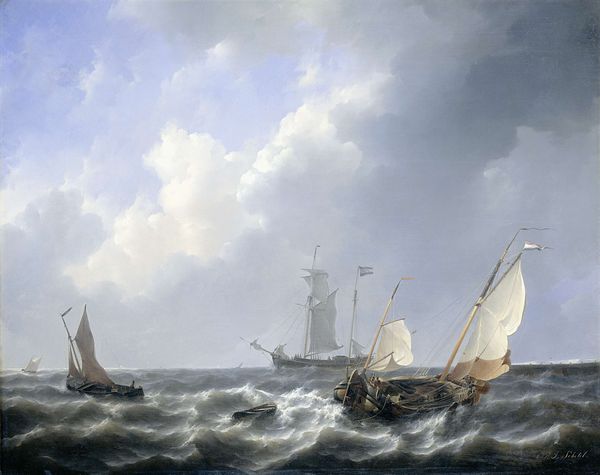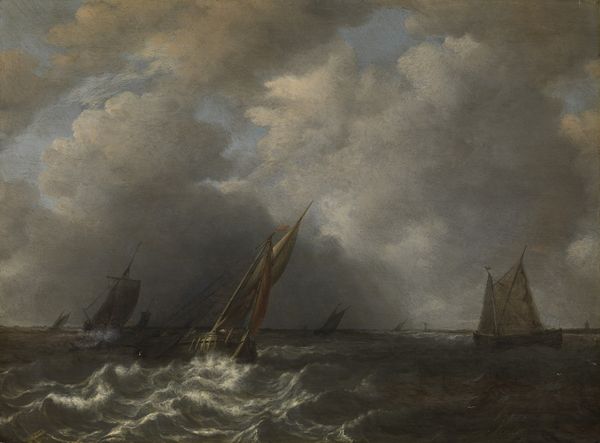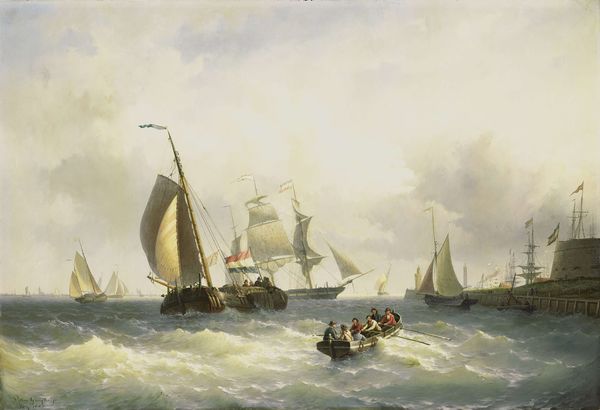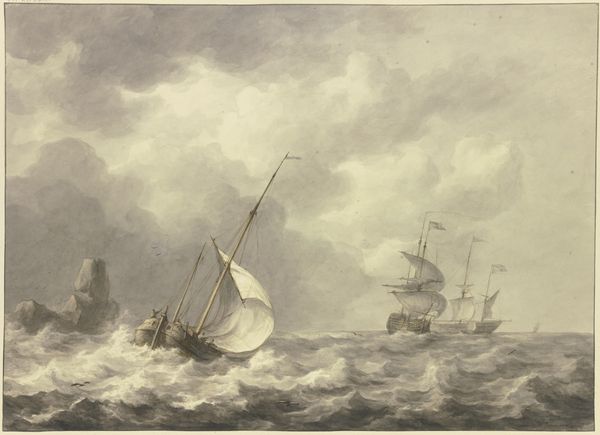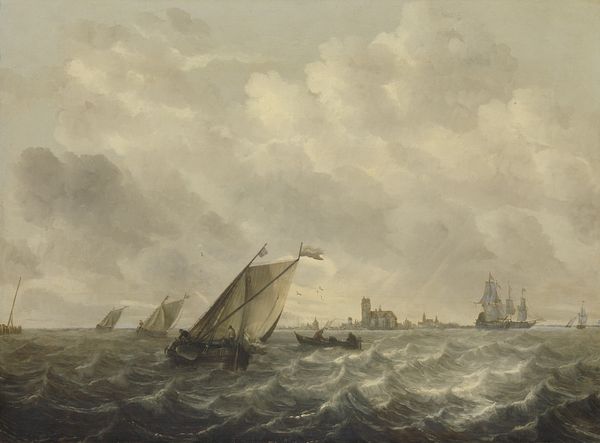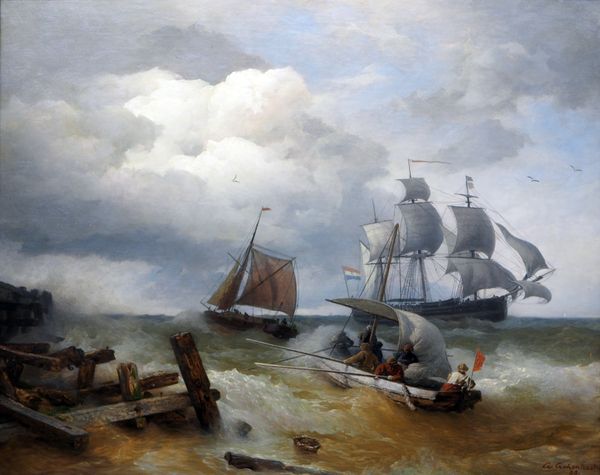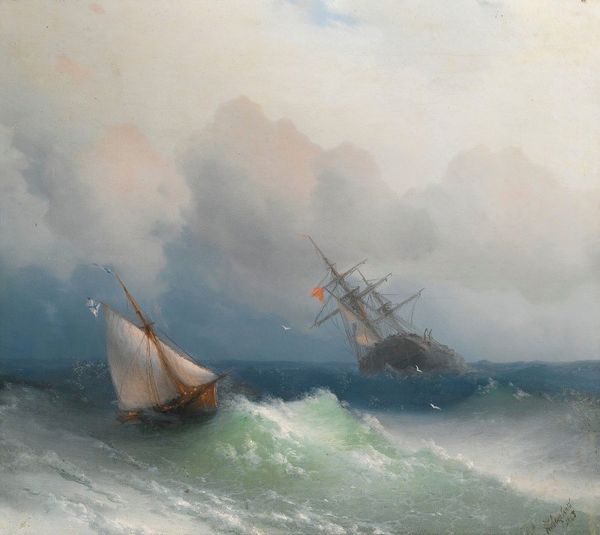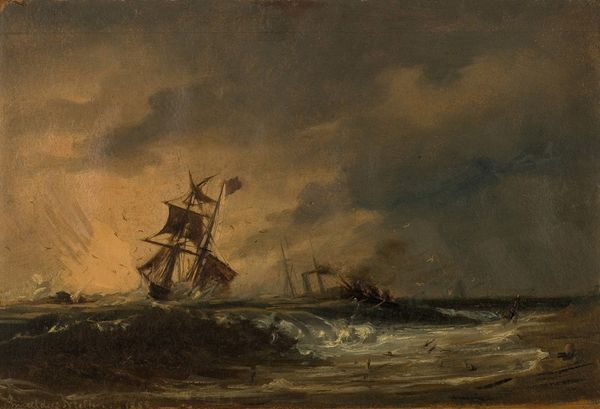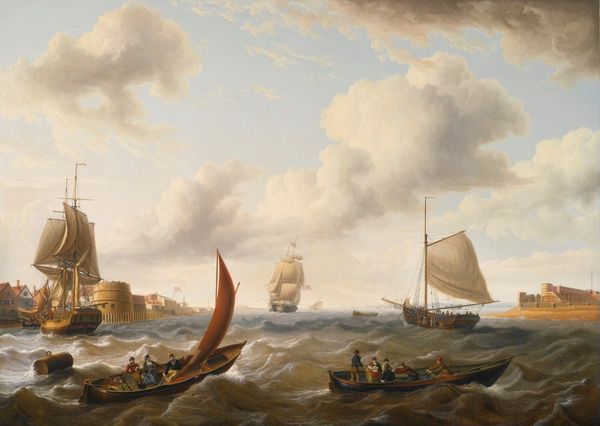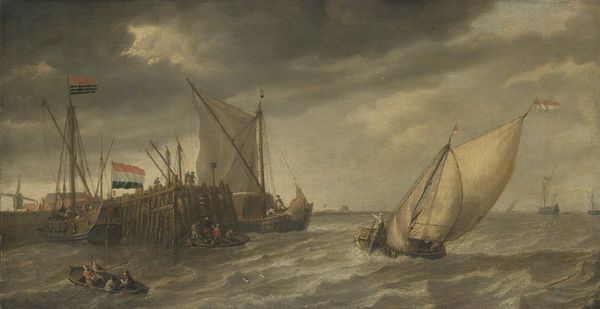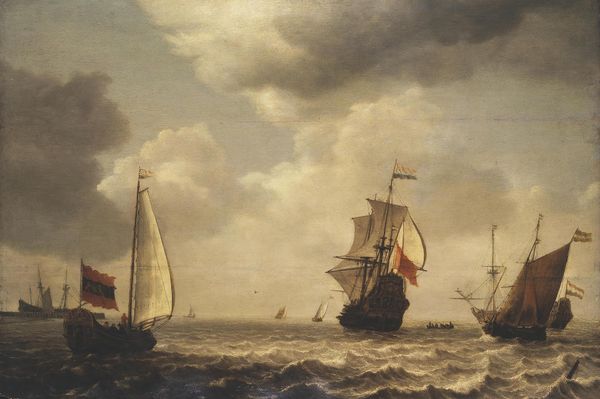
Dimensions: height 81.6 cm, width 103.5 cm, thickness 3.8 cm, depth 7 cm
Copyright: Rijks Museum: Open Domain
Curator: Here we have Nicolaas Baur’s “The Navy's Man-of-War 'Amsterdam' off the Westerlaag on Y at Amsterdam," painted in 1807 using oil on canvas. What are your initial thoughts? Editor: My first impression is turbulent. The artist's command of rendering such a stormy scene is quite powerful. The ominous clouds and crashing waves really evoke a sense of nature’s raw power. Curator: Indeed, observe how the artist uses diagonal lines throughout, in the waves and rigging, creating dynamism and tension. Notice too the deployment of impasto for the waves. Can you expand on how these techniques work within a specific art-historical context? Editor: Baur was working in a period where national maritime power was deeply connected to identity and colonial ambition. Paintings such as these functioned almost as propaganda. Displaying a potent navy communicated a clear political message. This scene might serve to legitimize naval activities by representing them as sublime challenges met and conquered, effectively downplaying the violence associated with these large armed vessels. Curator: And from a purely formal perspective, the baroque influence is clear, evidenced by the dramatic light, strong contrasts, and the painting’s sheer dynamism. Look at how Baur directs your eyes by varying his tonal and colour range to create emphasis and structure, even to hint to areas beyond the view of the viewer. It gives the overall work great impact and is one that would leave no visitor unawed in that period. Editor: True. There's a clear intent to evoke awe, something expected given that the state was the major commissioner and owner of art at the time. But what of its enduring appeal now? The turbulent scene and its rendering continue to offer something which still impacts on viewers and asks the same question, who is really in charge, us or nature? Curator: Absolutely. I appreciate how your focus on its sociopolitical function highlights the work's historical significance. Seeing how structure creates meaning while accounting for historical factors really emphasizes the complexity of the art we are looking at. Editor: And likewise, it is important to appreciate just how well crafted and powerful the images were when making their statement.
Comments
No comments
Be the first to comment and join the conversation on the ultimate creative platform.
